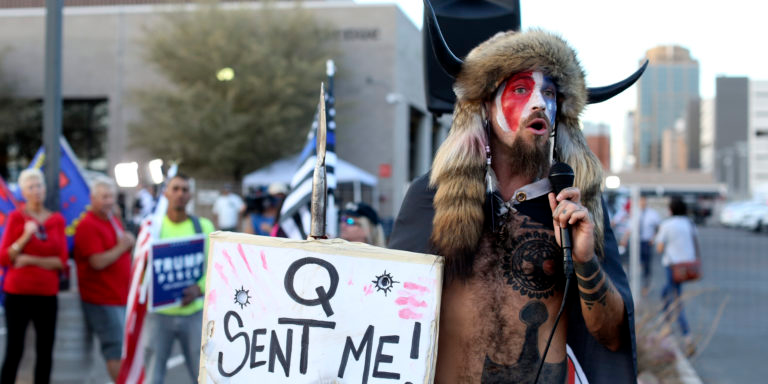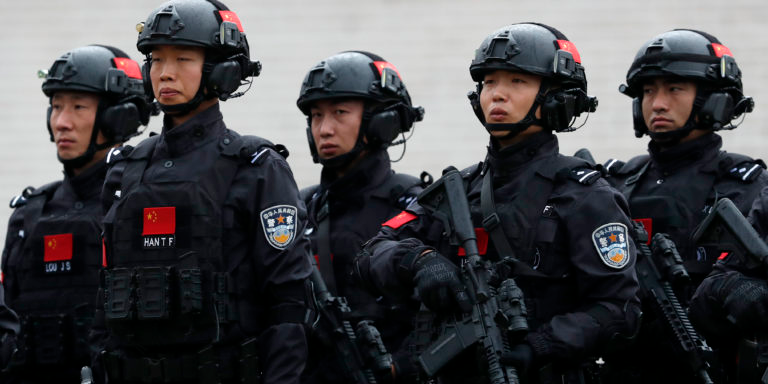The QAnon conspiracy theory-based movement appears to have fractured following the inauguration of President Biden on January 20, 2021.
There are efforts being made by a range of violent non-state actors to recruit disaffected QAnon members into their orbit.
The QAnon movement is in flux and the most ardent members point to a new date – March 4 – as critical to the fight against the deep state.
In its 100-day review of domestic extremism, the U.S. government should evaluate the dangers posed by the remnants of the QAnon conspiracy.
The inauguration of U.S. President Biden on January 20, 2021 represented a watershed moment for some believers within the QAnon community. Over social media, some adherents of the QAnon conspiracy theory – which centralized the role of President Trump as a savior from the “deep state” – expressed their discontent about being led astray by predictions from an alleged anonymous government insider, “Q,” who passed on reported secrets or insights to followers in periodic “Q-drops.” Biden’s assumption of the Presidency, disproving the QAnon prediction that Trump would retain the Presidency, through violence if necessary, accelerated the fracturing of the QAnon movement. However, it would be a mistake to assume that what began as a conspiracy theory and was ultimately deemed a domestic terrorism threat by the FBI in 2019 is over. Indeed, to the most ardent of QAnon followers, there is no “theory.” Instead, there is an underlying and very real belief system, which presages a great danger associated with this movement. There are at least three possible (non-mutually exclusive) outcomes regarding the future of the QAnon movement and its followers, each of which presents unique challenges.
First, those disgruntled by QAnon’s false prophecies and the constant date shifting of the seminal event, ‘The Storm’, associated with Q’s theories, may look to other violent extremist groups to join. The Storm, an apocalyptical event that would lead to a great bloodletting whereupon the secret cabal of elite pedophilic predators and other enemies of former President Trump would be vanquished, has not transpired. Initially, hardened white supremacist and right-wing agitators gathered online to mock the anguish of Q’s followers. In time, however, overtures to disaffected ‘Anons’ grew. Over social media and encrypted communication platforms, violent extremist groups, including white supremacists, saw an opportunity to recruit new followers to their own movements. Former Anons already shared similar grievances, such as Trump’s political exit, that provided an opening for dialogue. While QAnon supporters in the past have carried out acts of violence, such as murder and kidnapping, they have not engaged in wider scale organizational street violence like the Proud Boys. A shift of additional QAnon recruits to organizations with more violent ambitions presents a national security threat.
Second, those remaining within the QAnon movement are likely the most zealous; the most indoctrinated among them represent a continued domestic terrorism threat. In fact, some of the most hardcore QAnon supporters, such as Ashli Babbitt and the “QAnon Shaman” Jacob Chansley, overran the Capitol and engaged in alleged violent activity during the January 6 insurrection. Those remaining within the QAnon movement have seized on a new date – March 4 – which, they believe, will allow for former President Trump to continue his battle against the deep state. This convoluted theory, pilfered from the sovereign citizen movement, contends that President Trump will return to power on March 4 and be sworn in as the 19th President of the United States. Those who embrace this notion believe that there have not been any legitimate presidents since Ulysses S. Grant (the 18th President) after ‘secret’ laws were passed in 1871 that turned the United States into a corporation instead of a democratic country. March 4 is significant in that U.S. presidents were, until 1937, inaugurated on March 4 (as opposed to January 20). In what will surely be interpreted as Trump’s support for this idea, the Trump hotel in Washington D.C. raised room prices for dates on/around March 4. The remnants of QAnon are true believers and have an ideological commitment comparable to religious movements, as some scholars have previously noted.
Finally, there are documented instances of QAnon followers leaving the movement. The stories of those leaving the movement and trying to reconcile with family are heart-breaking and have parallels to those who have left cults. As former ‘Anons’ reintegrate into society and get back in touch with their families, it is incumbent that there is a support network around them – one that demonstrates compassion and understanding. The willingness to depart the QAnon movement, alone, is a significant step. Given the volatility in the American political scene, eroding the bases of support that movements like QAnon have gained will be critical to achieving domestic political stability and preventing further radicalization. As the United States Government carries out its 100-day domestic extremism review, it must consider what additional resources can be devoted to fighting the conspiracy theories and disinformation that allowed the Q’s posts to become part of a hardened belief system – and their implications for violent extremism and terrorism, especially when considered against the backdrop of QAnon’s international following.
 Eurasia Press & News
Eurasia Press & News




